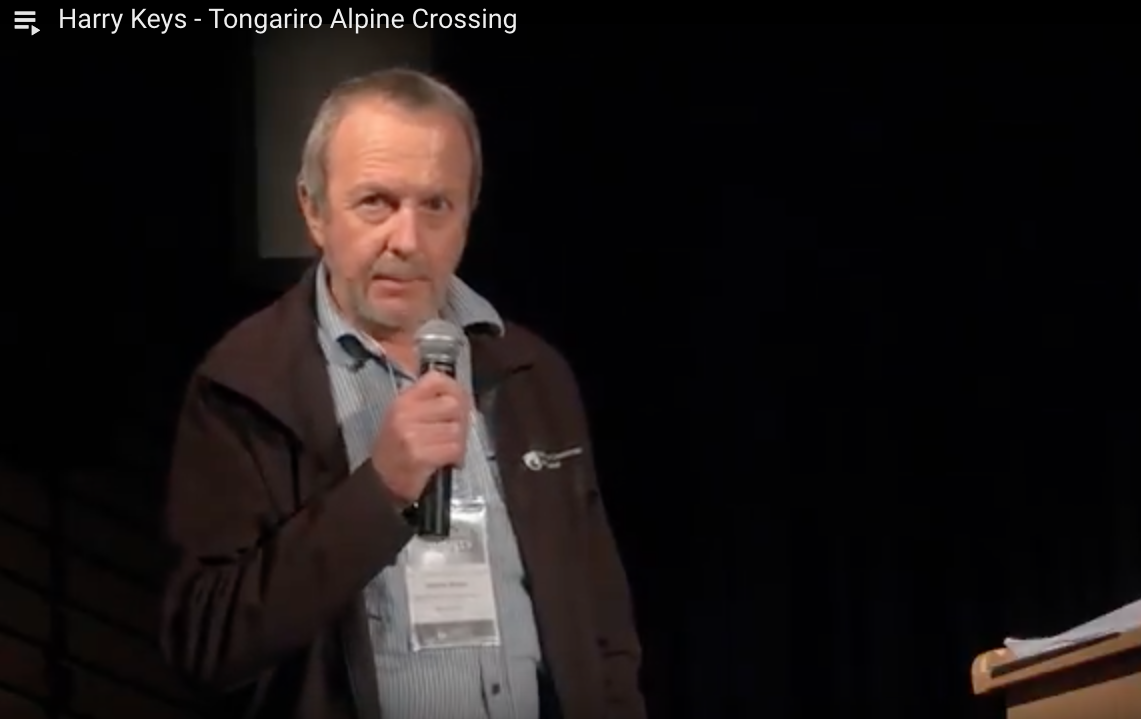Watch Harry Keys’ talk below:
The Tongariro Alpine Crossing is a very popular 20 km day hike over the Tongariro volcanic massif in Tongariro National Park World Heritage Area. The track was developed from the early 1900s for tourism purposes and the track network is now visited by well over 100,000 people annually growing at about 9% per year. This talk outlines who the people are, what they like and dislike, and the main management concerns and issues. Predictably these have included track and road maintenance, human waste disposal, crowding, safety and risk management, as well as protecting cultural values. Managing crowding and reducing risks to visitor safety are two of the longest running concerns. Given the economic benefits of the Crossing to local companies and tourism, and its huge growth in popularity, these two concerns are major and controversial challenges for the future.
Harry is a scientist with the New Zealand Department of Conservation involved in volcanic risk mitigation. His focus is the central North Island, which includes Tongariro National Park World Heritage Area, and particularly the Tongariro Alpine Crossing and Mt Ruapehu. He works with many agencies including GNS Science. In 2008 he was accorded a national honour, being made an Officer of the New Zealand Order of Merit, for services to Conservation, especially for his leading role in the management of a controversial volcanic risk involving Mt Ruapehu’s Crater Lake. Harry is a former mountain guide, and a mountaineer, tramper and skier. He was made a Life Member of both the Taupo Ski Club (2012) and the Tongariro Natural History Society (2013), a local conservation organisation in the Tongariro/Taupo area. He also works in summer on tourist expedition ships to Antarctica as a lecturer and guide.
View Harry’s slides below:
